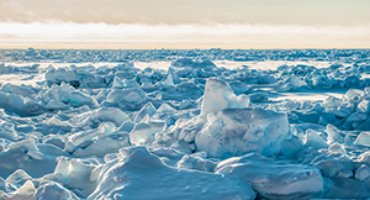Lead institution:
York University – Canada
The coastal and inland communities distributed across the Canadian Arctic depend on safe, accessible, and affordable transportation routes to support regional economic development, and to underpin sustainable livelihoods, culture, and food security. In the winter, transportation requires sea ice, freshwater ice, and snow to be thick enough to sustain the weight of snowmobiles and trucks. In the summer, navigational routes and harbours in the ocean need to be sufficiently free of sea ice to permit safe shipping activity.
Climate change has decreased the duration, extent, and thickness of the cryosphere in the Arctic, including sea ice, freshwater ice on lakes and rivers, and snow cover. This loss of reliable, and safe transportation conditions has direct implications for mobility in the Arctic, both marine and overland. In this project, we aim to forecast the availability of suitable marine shipping routes and overland winter trails and ice roads under global warming scenarios of 1-4ºC above pre-industrial (1850-1900) times. We have assembled a strong transdisciplinary team to develop climate mobility projections for local communities, in order to better inform local adaptation efforts.
Ultimately, our goal is to provide climate model projections of key cryosphere variables (snow, freshwater ice, sea ice) and their drivers (temperature, precipitation) at the regional and community-level scales across the Canadian Arctic that can be used to better understand the impacts, risks, and adaptation options available to support safe local and regional marine and overland mobilities.
Lead Contact: Sapna Sharma (sapna.sharma23@gmail.com; sharma11@yorku.ca)
